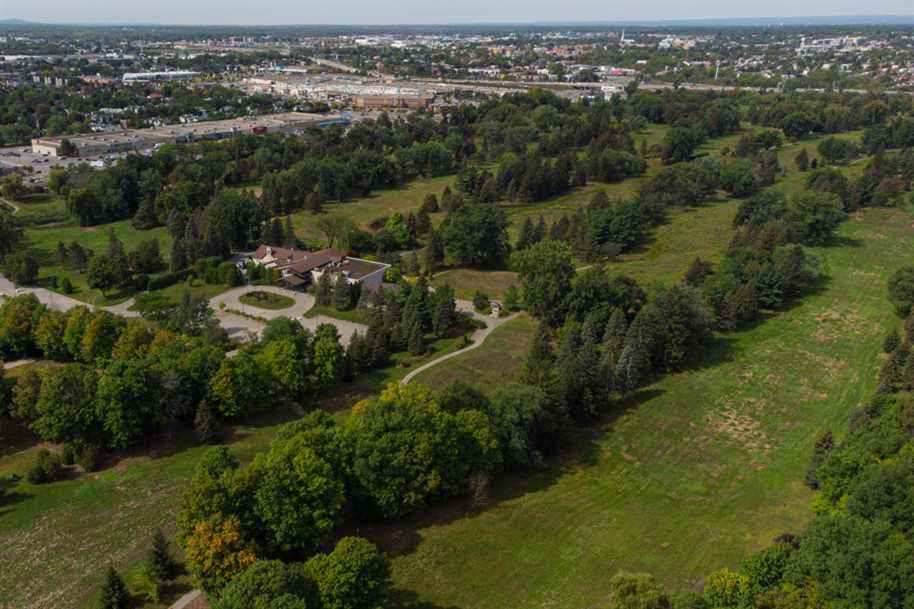Posted at 5:00 a.m.
Moratorium on zoning changes
In a letter sent on March 7 to the Minister of Municipal Affairs and Housing, Andrée Laforest, more than 50 groups of citizens ask the government to adopt a moratorium on the change of zoning and use of former golf courses . “The climate and biodiversity crises combined with the pandemic are leading to important new reflections on land use planning. The conservation of old golf courses is now becoming an opportunity not to be missed,” writes Olivier Delorme, president of the Laval-West Citizens’ Committee. “There will be no turning back if we allow the destruction of these precious natural environments that are still vegetated and provide many ecosystem services,” he adds.
Golf less and less popular
In recent years, several golf clubs have ceased operations due to a lack of players to ensure their profitability. In Greater Montreal alone, 12 clubs have closed shop since 2010, according to a compilation produced by the Montreal Metropolitan Community (CMM).

MAP PROVIDED BY THE MONTREAL METROPOLITAN COMMUNITY
No less than 12 golf clubs have closed since 2010 in Greater Montreal.
These 12 lots covered 657 hectares, almost three times the area of Mount Royal Park. Most of these closures have given way to residential subdivision projects. The phenomenon is not only regional. In Canada, 158 golf clubs ceased operations between 2010 and 2015, while 21 new 18-hole courses opened.
Very popular with property developers
In the borough of Saint-Laurent, the Le Challenger golf club ceased operations in 2011. Since then, an entire neighborhood has been built on a good part of the 83 hectares of the old course, which was wedged between boulevard Cavendish and road 117.
-

IMAGE FROM GOOGLE EARTH
Le Challenger golf club, in the borough of Saint-Laurent, in 2007
-

IMAGE FROM GOOGLE EARTH
Neighborhood erected on the site of the former Le Challenger golf club, in 2020
1/2
In Carignan, part of the Le Riviera golf club has been replaced by a residential subdivision project. More recently, part of the Le Cardinal golf course in Laval was sold to a real estate developer who plans to build 700 homes there. In several other municipalities, however, the fate of former golf courses is still up in the air. This is particularly the case in Rosemère, Terrebonne, Brossard and Chambly.
Waiting for the next strategy on land use planning
The coalition Les courses de golf en transition, the Citizens’ Committee of Laval-Ouest, Mères au front and several other groups are asking Minister Laforest to suspend changes to the zoning and use of the old golf courses, in particular until the new national strategy for urban planning and regional development is adopted. Citizens would also like the Expropriation Act be reviewed so that “it is possible for municipalities to acquire old golf courses at fair market value”. However, nothing indicates that the Minister will follow up on the request for a moratorium. Its press officer, Bénédicte Trottier Lavoie, indicated by email that “the zoning modification is a prerogative of the municipal councils. The latter have the latitude to receive, or even to refuse, any modification requested by a third party.
Elected officials also ask Quebec to intervene
Citizens’ groups are not the only ones calling for provincial intervention. The MRC of Thérèse-de-Blainville, in the northern crown, has just decided to “call on the Government of Quebec for a national strategy aimed at protecting green spaces, including the transition of former golf courses”. The council of mayors also ruled that it would not respond to the request for a change of use for the former Rosemère golf course. Note, however, that the Ministry of Municipal Affairs and Housing refused a first request to this effect filed by the MRC last fall. The Town of Rosemère nevertheless rejected a subdivision project submitted by the new owners of the former golf course. A group of citizens of Rosemère is asking the City that at least 88.5% of the golf course be transformed into a park.
“Strict” rules requested
By 2031, the MWC should in principle have protected 17% of its land territory. However, the protected area has stagnated around 10% for several years. A recent Statistics Canada study revealed that the majority of major Canadian cities, including Montreal, had lost green spaces between 2001 and 2019 to urbanization. In their letter to Minister Laforest, the citizens’ groups point out that “in many municipalities, the commercial and industrial wastelands available for redevelopment are amply sufficient to meet the demographic projections for the coming decades. These sites must be prioritized in order to protect our last green spaces. Without strict rules to preserve them, several municipalities, in search of new tax revenues, will allow construction on the old golf courses before considering other places more conducive to sustainable development,” they conclude.
Learn more
-
- 11
- Of the 12 golf clubs that have closed their doors since 2010, 11 were located within the urbanization perimeter of Greater Montreal. According to the Metropolitan Community of Montreal, “most conversions involve residential redevelopment”. In addition, of the 65 golf courses still in operation, 30 are located within the urbanization perimeter.Have
Source: Metropolitan Community of Montreal
- 46%
- Almost half of the golf clubs still in operation in 2017 were loss-making.
Source: Statistics Canada

